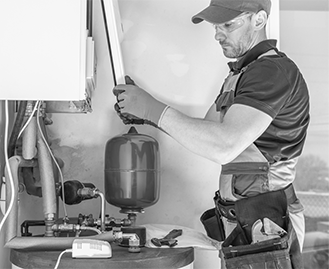What are the methods of Stormwater Installation by professionals?
Stormwater installation is a critical aspect of
urban and suburban infrastructure, designed to manage rainwater runoff
effectively to prevent flooding, erosion, and water pollution. Professionals
involved in stormwater installation employ various methods and technologies to
ensure the efficient collection, conveyance, treatment, and storage of
stormwater. Below, we'll discuss some of the primary methods used by professionals
in stormwater installation:
Stormwater
Drainage Systems:
Catch
Basins and Inlets: Professionals install catch
basins and inlets at strategic locations to collect stormwater from impervious
surfaces like roads and parking lots. These structures feature grates or
screens to filter out debris and prevent clogging.
Pipes
and Conduits: Underground pipes and conduits are used to
convey collected stormwater to treatment facilities or storage structures. Emergency Plumbing Mount Waverley select pipe materials and sizes based
on the volume and velocity of runoff.
Manholes:
Manholes provide access points to stormwater drainage systems for inspection,
maintenance, and repairs. They are placed at intervals along the pipeline.
Retention
and Detention Basins:
Retention
Basins: These basins are designed to hold stormwater
temporarily and allow it to slowly infiltrate into the ground. Professionals
use retention basins to recharge groundwater and reduce peak flow downstream.
Detention
Basins: Detention basins are used to temporarily store
stormwater before releasing it at a controlled rate into downstream water
bodies. They help mitigate flooding and prevent erosion.
Bioretention
Systems:
Rain
Gardens: Professionals design rain gardens with native
vegetation to capture and treat stormwater runoff. The plants and soil in rain
gardens help filter pollutants and improve water quality.
Green
Roofs: Green roofs involve installing vegetation on
building rooftops. They capture and absorb rainwater, reducing runoff and
providing insulation benefits.
Permeable
Pavement: Professionals use permeable materials for
driveways, sidewalks, and parking lots. These surfaces allow water to
infiltrate, reducing runoff and promoting groundwater recharge.
Stormwater
Treatment Devices:
Oil-Water
Separators: These devices remove oil and grease from
stormwater runoff, preventing contamination of water bodies.
Sediment
Basins: Sediment basins capture and settle out
sediments from stormwater before it enters water bodies, preventing siltation
and water pollution.
Bioretention
Cells: Similar to rain gardens, bioretention cells use
vegetation and engineered soils to treat stormwater through filtration and
biological processes.
Erosion
Control Measures:
Silt
Fences: Professionals install silt fences along construction
sites to prevent soil erosion and the discharge of sediment-laden runoff into
nearby water bodies.
Riprap
and Gabions: These rock-based structures are used to
stabilize slopes and prevent erosion along riverbanks and channels.
Stormwater
Management Plans:
Professionals develop comprehensive Stormwater Installation Mount Waverley management plans tailored to specific
projects or areas. These plans consider factors like land use, soil types, and
rainfall patterns to design effective stormwater solutions.
In conclusion, stormwater installation by
professionals of Mount Waverly Local Plumber involves a range of methods and
technologies to address the challenges associated with urban runoff and water
quality. These methods are essential for safeguarding the environment, reducing
flooding risks, and promoting sustainable urban development. Effective
stormwater management requires a multidisciplinary approach and a commitment to
ongoing maintenance and improvement. To get professional installation connect
with them now!

Comments
Post a Comment